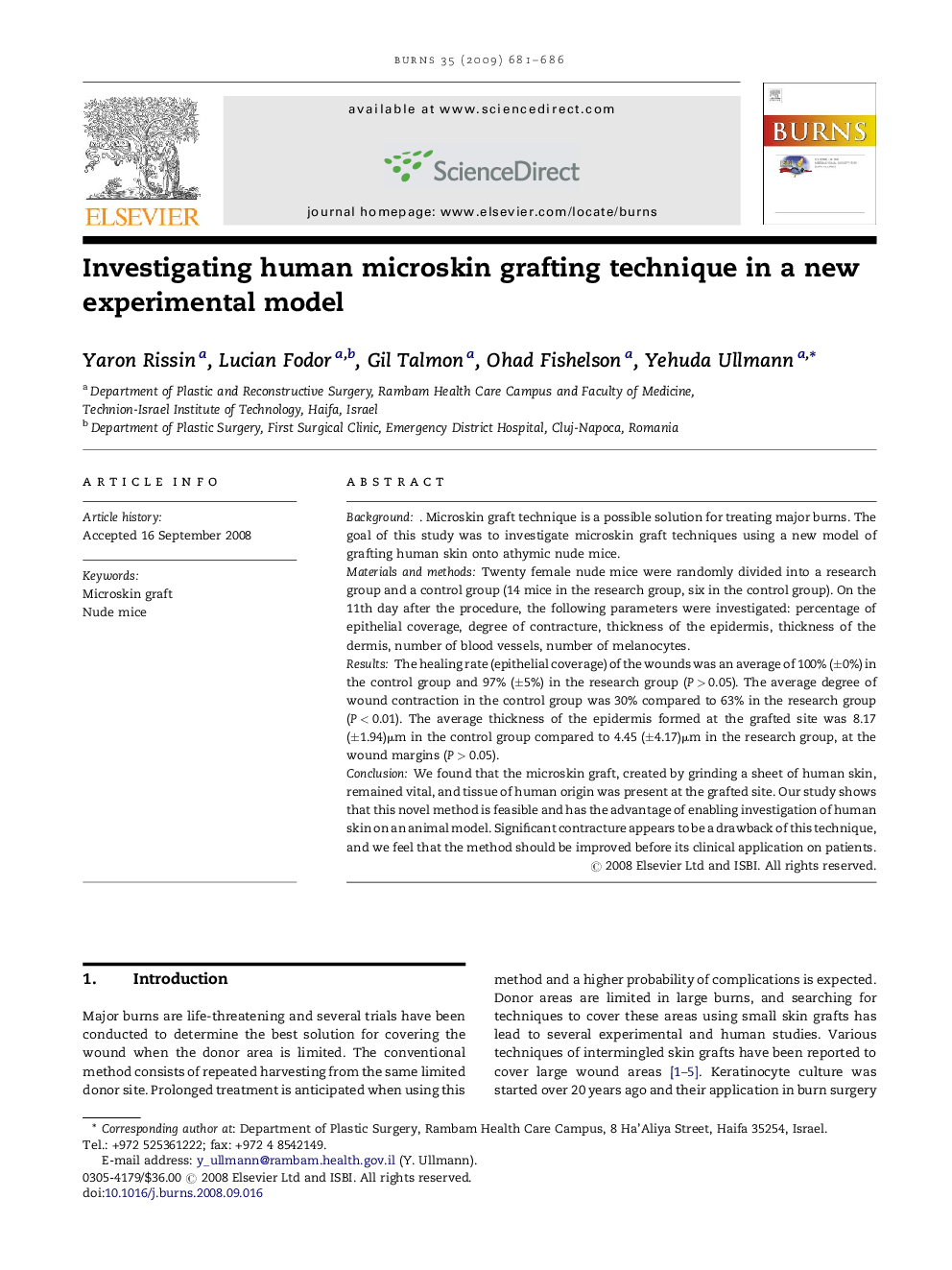| Article ID | Journal | Published Year | Pages | File Type |
|---|---|---|---|---|
| 3105594 | Burns | 2009 | 6 Pages |
Background. Microskin graft technique is a possible solution for treating major burns. The goal of this study was to investigate microskin graft techniques using a new model of grafting human skin onto athymic nude mice.Materials and methodsTwenty female nude mice were randomly divided into a research group and a control group (14 mice in the research group, six in the control group). On the 11th day after the procedure, the following parameters were investigated: percentage of epithelial coverage, degree of contracture, thickness of the epidermis, thickness of the dermis, number of blood vessels, number of melanocytes.ResultsThe healing rate (epithelial coverage) of the wounds was an average of 100% (±0%) in the control group and 97% (±5%) in the research group (P > 0.05). The average degree of wound contraction in the control group was 30% compared to 63% in the research group (P < 0.01). The average thickness of the epidermis formed at the grafted site was 8.17 (±1.94)μm in the control group compared to 4.45 (±4.17)μm in the research group, at the wound margins (P > 0.05).ConclusionWe found that the microskin graft, created by grinding a sheet of human skin, remained vital, and tissue of human origin was present at the grafted site. Our study shows that this novel method is feasible and has the advantage of enabling investigation of human skin on an animal model. Significant contracture appears to be a drawback of this technique, and we feel that the method should be improved before its clinical application on patients.
